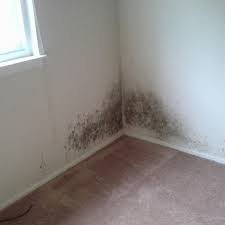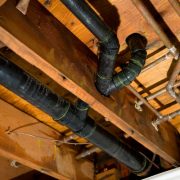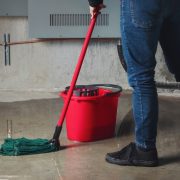
Indoor Mold in San Diego CA
The musty smell, the slick black spots on the shower curtain, the fuzzy white patches on the basement floor, and that sordid orange film on the kitchen drain… indoor mold isn’t just nasty, it’s a health hazard as well. Indoor mold can make you really sick especially if you have asthma or allergies.
Just how much of a health hazard is Indoor mold?
For some people, simply inhaling or touching mold spores is enough to cause serious allergic reactions. Mold in house symptoms may include – skin rashes, red eyes, runny nose, and sneezing. In individuals with asthma, breathing in spores can trigger asthma attacks. For those with serious mold allergies, severe reactions can include shortness of breath.
Other People Sensitive to Mold
In addition to those with asthma and allergies, others who may be sensitive to mold include:
- Babies
- Young children
- The elderly
- Patients with chronic lung disease
- Individuals with a compromised immune system ( due to cancer, HIV, liver disease, chemotherapy)
What is mold, exactly?
It’s a type of fungus consisting of small organisms. It can be seen as green, white, black, orange, or even purple. Indoor mold plays a pivotal role in nature because it breaks down dead plants, trees, and leaves. It thrives on moisture and reproduces via tiny spores that travel through the air.
We are exposed to indoor mold on a daily basis. In small amounts, mold spores are harmless. When indoor mold grows, spores are released into the air and are easily inhaled. Inhale a large number of spores, and health problems can set in.
Mold grows anywhere where moisture is found – bathrooms, kitchens, laundry areas, basements, crawl spaces, as well as walls, floors, carpet, furniture, and even appliances.
How Much Mold Exposure is Harmful?
There is no general guideline for how much mold exposure is harmful. The effects of mold exposure manifest differently in each person. For people who have asthma, are allergic to mold, or have weakened immune systems, just a small amount of exposure can be harmful
What Causes Mold in a House?
Mold grows in damp areas of the home. These areas include basements, bathrooms, kitchens, laundry rooms, and crawl spaces. The best way to prevent mold from growing is to make sure that your home is properly ventilated. If you have an attic or basement, you should make sure that you have proper ventilation. You should also make sure that you have proper drainage around your home.
How to Control Indoor Mold
- Hot and humid climate? Use air conditioners and air dehumidifiers. This helps reduce moisture in the air.
- Invest in a hygrometer, an inexpensive instrument that measures relative humidity. (available in most hardware stores). Try to keep indoor humidity below 60%.
- Make sure that drain lines are clog-free.
- Keep your house warm in cool weather. As the temperature drops, air tends to hold less moisture. When this happens, moisture condenses on cold surfaces and mold begins to thrive.
- Insulate cold surfaces to reduce condensation.
- Wet areas must be wiped and dried within 24 to 48 hours to prevent mold.
- The grounds outside your home must slope away from your house. If water enters your house from the outside, fix your landscaping and consider waterproofing.
- Have your heating and cooling system professionally checked for efficiency and leaks. Incorrect airflow affects humidity.
- Increase circulation by opening doors between rooms. Increase circulation further by periodically using fans and mobbing furniture away from the wall.
- Take advantage of exhaust fans to move moisture outside the house. Do not exhaust into the attic.
- Be diligent with checking for leaks around the kitchen sink, ice makers, and other appliances that use water.
- Regularly empty and clean refrigerator drip pans.
- Cover crawl spaces with plastic to prevent moisture from coming in from the ground.
- Ventilate crawl spaces by installing vents in outside walls.
- Waterproof concrete basement floors with a vapor barrier (plastic sheeting) over the concrete. Then top with sub-flooring (insulation encased in plywood) to prevent moisture.
- Ensure that gutters work properly and that water runs AWAY and not toward the house.
- Avoid leaving damp clothes in the laundry hamper
- Check for leaks in the bathroom sink, basin, and tub
- Leave a window open when showering.
Do you have an indoor mold problem in your home or office?
If you have an indoor mold issue in your home it is best and safest to find a good, honest mold remediation company like Gold Coast Flood Restorations. Got questions? Got Mold? Give us a call at (619) 449-9611
Flood & Mold Specialists Serving San Diego for Over 30 years
Serving San Diego and San Diego County for over 30 years with quality work and great service. We also service these cities – Chula Vista, El Cajon, La Mesa, Spring Valley, and Lakeside. Poway, Ramona, Alpine, Julian, Santee, Coronado, Imperial Beach, Pacific Beach, La Jolla, University City, Tierrasanta, Rancho Penasquitos, Rancho Bernardo, Rancho Santa Fe, Encinitas, Del Mar, Solana Beach, Leucadia, Sorrento Valley, Miramar, Mira Mesa, Scripps Ranch, Vista, Carlsbad, Oceanside, San Marcos, Lemon Grove, Bonita, Valley Center, Borrego Springs, Escondido, Fairbanks Ranch, Rancho San Diego 4S Ranch, Sabre Springs and Pine Valley.










Also find us on…